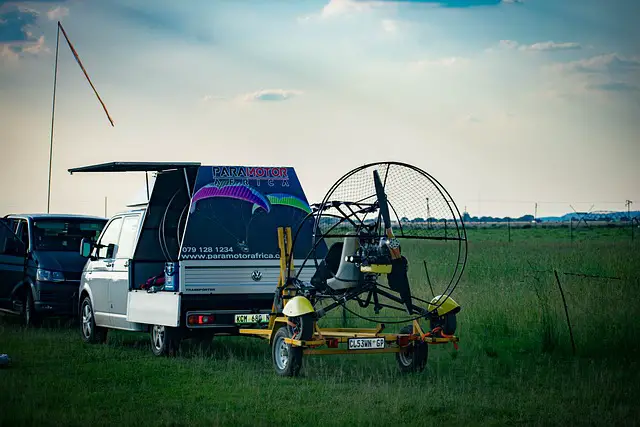Every thrill-seeker yearns for that adrenaline rush, the feeling of soaring high above the ground, feeling the wind against their face. One such exhilarating activity is paramotoring. But, it makes one wonder, ‘Is paramotoring safe?’

Understanding Paramotoring
Paramotoring, also known as Powered Paragliding (PPG), combines the simplicity of paragliding with the power of an engine. It involves the use of a motor attached to a paraglider, which provides thrust to take off, fly, and land. The pilot sits in a harness and has complete control over the direction and speed. But like other extreme sports, the question of safety is crucial.
Is Paramotoring Safe?
The answer to whether paramotoring is safe or not is multifaceted. On the one hand, it does entail inherent risks like any other aviation sport. On the other hand, numerous safety considerations and advances in technology make it relatively safe, provided the necessary precautions are followed.
Risk Factors in Paramotoring
Paramotoring, like any outdoor extreme sport, is subject to several risk factors. Encountering bad weather, mechanical failure, or improper handling can indeed lead to accidents. Pilot error is often cited as the leading cause of accidents in paramotoring, highlighting the need for thorough training and practice.
Safety Measures in Paramotoring
While there are risks associated with paramotoring, various safety measures can be adopted to mitigate these potential hazards. These include proper training, adhering to safety guidelines, using reliable equipment, and practicing regularly under varying conditions.
The Role of Training in Ensuring Safety
Regular and comprehensive training plays a pivotal role in ensuring safety in paramotoring. A good understanding of flight dynamics, meteorological conditions, equipment handling, and emergency procedures can significantly reduce the risk of accidents.
What Does Paramotor Training Involve?
A typical paramotor training course covers ground handling, launching, landing, in-flight control, and emergency procedures. It may also include theoretical lessons on aerodynamics, weather, and equipment maintenance. Training under different weather conditions and landscapes is crucial in enhancing a pilot’s proficiency and resilience.
The Importance of Equipment in Paramotoring Safety
Reliable equipment is an equally vital aspect of paramotoring safety. Ensuring that your paramotor is in good working order reduces the risk of mechanical failure and associated accidents. Regular inspections and maintenance are essential to ascertain its safety.
What Equipment is Needed for Paramotoring?
The essential paramotoring equipment includes a paramotor, a paraglider wing, a helmet, and safety gear like a reserve parachute and a flotation device. It is recommended to use recognized and certified equipment and ensure it is maintained regularly.
Summing Up: Is Paramotoring Safe?
Paramotoring, like any active sport, does carry a degree of risk. However, it can be considered relatively safe given the pilot’s competence, level of training, and the quality and maintenance of equipment. Always staying within one’s skill level, being cautious about weather conditions, and understanding the equipment can significantly improve the safety of paramotoring.
In the end, safety in paramotoring, as in any extreme sport, hinges upon the individual. So, is paramotoring safe? Yes, but it depends on how seriously you take your safety. Adventure and thrill should never compromise one’s safety, and prudent adventurers make the best pilots!



